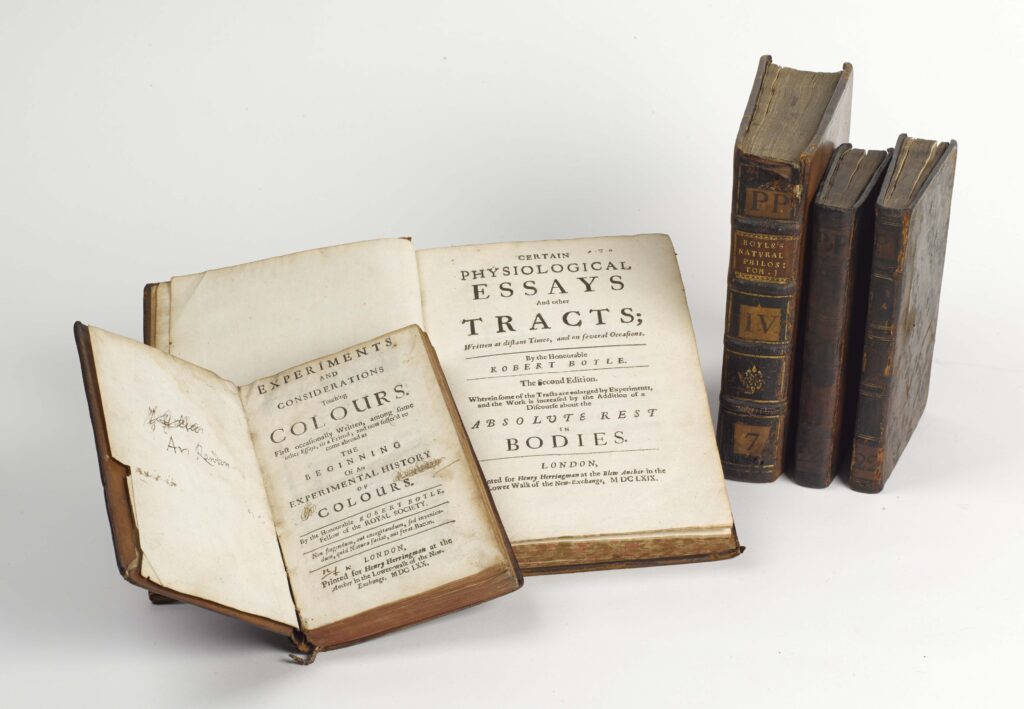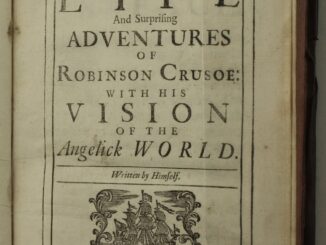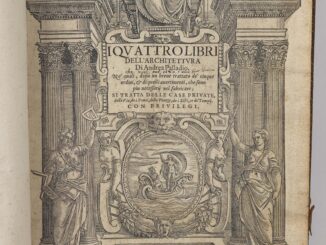Mark McKillion, Ulster University MA History graduate and volunteer for the Library in 2022, carried out research on Robert Boyle’s Hydrostatical Paradoxes (1666), New Experiments and Observations Made Upon Icy Noctiluca (1682) and Medicina Hydrostatica (1690) (object IDs P001433543, P001433551, P001433535).
You can adopt any of these works for £500 each, and support the work of the Library, caring for our wonderful collections, and inspiring present and future generations!
Even over three hundred years after his death, Robert Boyle is renowned for his contributions to the development of scientific research, with John Aubrey describing him as “that profound Philosopher, accomplished Humanist, and excellent Divine.”[1] In the 1650’s, Boyle had gained an interest in the study of chemistry as a means of understanding the properties of matter: therefore, he would develop a theory known as the ‘corpuscular philosophy’ that was intended to explain the properties of “those two grand and most Catholic principles, matter and motion.”
As a result of his findings, Boyle had solidified the precedent that any scientific theory would need to be verified with the application of experimental evidence: he would continue his research during this period by changing his focus from chemical to physical experimentation, with the most notable example being his development of a refined version of the air pump that had previously been invented by the German scientist Otto von Guericke, by reinforcing the maximum amount of vacuum that the device could produce.[2]
In short, scholar J.F. Fulton described Boyle as an influential figure who successfully combined the fields of theology and science into a format that could be easily understood by men of his era, and over the course of his life, he had published forty-two books and several scientific papers in which he described at length the full extent of which he devoted himself to his craft.[3]
For example, in the opening chapter of his text Hydrostatical Paradoxes, Boyle briefly elaborates on the imposing task of gathering the required materials to carry out his research on hydrodynamics, as the necessary experiments will at minimum require ‘tubes twenty foot long, and a great vessel of at least as many feet in depth, which will not in this country be easily procured.’[4]
Likewise, Boyle would write an appendix to the Icy Noctiluca titled ’A Chemical Paradox,’ in which he prepares to exhibit his latest findings in his research on chemistry, which began with his earlier text The Sceptical Chemist, by declaring that he will present ’a discovery, that will perhaps make you think the vulgar opinion of chemists to be less fit to be doubted of, than rejected.[5]
Lastly, he summarises the importance in the opening pages of the text Medicina Hydrostatica, where he emphasises the importance of experimentation in his studies; in this case, he notes how a margin of error can greatly affect hydrostatical research, as the researchers ’are wont to think it sufficient… that the body to be examined, be totally immersed in the water,’ therefore not accounting for the possibility of the creation of air particles that could potentially disrupt the accuracy of the experiment.[6]




